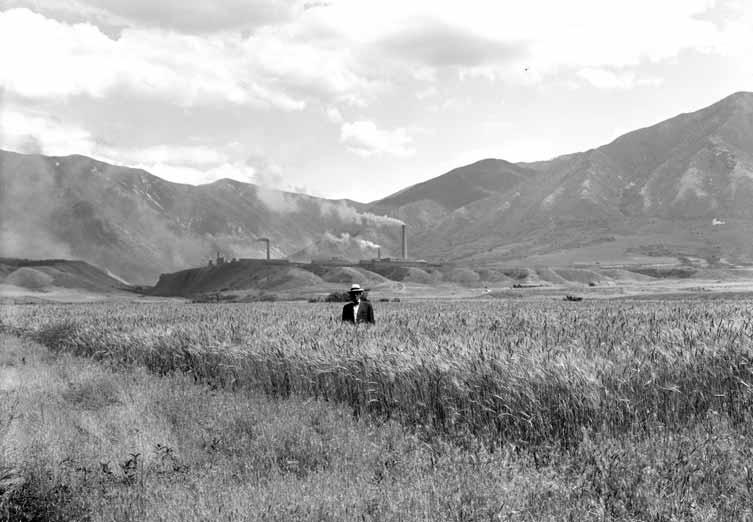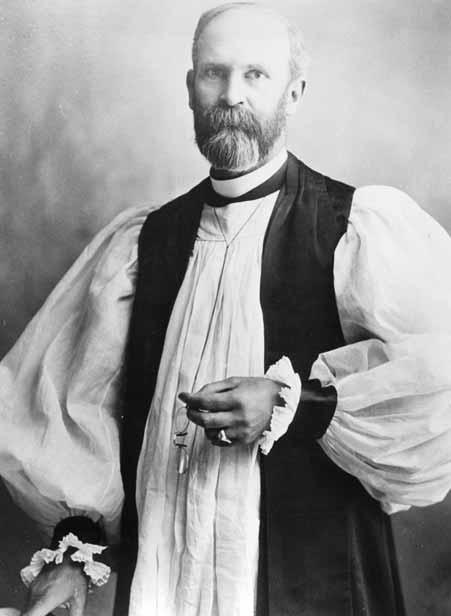
3 minute read
In This Issue
Students of history are generally familiar with the early nineteenth-century German historian and philosopher Georg Wilhelm Friedrich Hegel and his dialectic concept of history that holds the process or progress of history is the result of conflict. The terms thesis, antithesis, and synthesis have been used to describe the process of an existing idea or movement—the thesis, coming in conflict with another idea or movement— the antithesis, with the result being a new synthesis that will become the thesis as it encounters yet another antithesis in the progress of history. The articles in this issue of Utah Historical Quarterly seem to illustrate, at least to some degree, the viability of Hegel’s idea as they describe circumstances and points of conflict that caused change and adaptation for earlier generations of Utahns.
The idea and practice of smoke farming is likely to raise questions of why and how. Our first article presents an intriguing examination of the conflict between Utah farmers and smelter operators and the surprising result as smelter wastes were converted to fertilizers and the scientific agricultural practices implemented on smelter-owned experimental farms all led to significant changes in Utah agriculture. This article reminds us of the environmental hazards that accompanied Utah’s early smelting industry, the conflicting priorities between farmers and smelter operators, and how, out of this dialectic, unforeseen adaptations and improvement occurred.

Photographs of two different Chinese dragons that participated in July 24th parades in Salt Lake City.
UTAH STATE HISTORICAL SOCIETY
In our second article, which examines Chinese life in late nineteenth-century Salt Lake City, the clash of two peoples—described as white and Chinese—and how it played out on the streets of downtown Salt Lake City. In a sense, it is as though peoples from two different planets with little understanding of each other came to occupy the same physical space. The degree to which these two groups could accommodate in matters of race, space, and life illustrates age old issues and conflicts which are likely to always be fundamental in our human story.

Photographs of two different Chinese dragons that participated in July 24th parades in Salt Lake City.
UTAH STATE HISTORICAL SOCIETY
Another figure in late nineteenth-century Utah history, Abiel Leonard, the subject of our third article, was a man whose nearly sixteen year ministry as Episcopalian Bishop of Utah, fell between those of two giants of the Utah and national Episcopal church—Daniel S. Tuttle (1867-1883) and Franklin Spenser Spalding (1903-1914).Nearly forgotten to history, Leonard, nevertheless, worked with care and dedication to provide the sacraments of baptism and confirmation to hundreds, extend the church’s work among Native Americans, provide support and guidance for clergy under his authority, find common ground with leaders of other denominations ,and to expand the Utah Episcopalian institutions of St. Mark’s Hospital, Rowland Hall School, and St. Mark’s Cathedral.
Our final article, centered in the difficult days of the Great Depression, examines one group’s disillusionment with Franklin D. Roosevelt’s programs that led to the endorsement for Union Party candidate William Lemke’s placement on the 1936 presidential ballot in Utah. The old age pension initiative, supported by Lemke and the Union Party, offered an attractive solution to Utah’s senior citizens who struggled with the double burden of high unemployment and latent age-discrimination during the 1930s.
This issue, then, offers a hearty and varied menu of substantial history that considers issues of environment, agriculture, industry, race, discrimination, society, religion, politics, and elections all spiced with a good dose of conflict.






